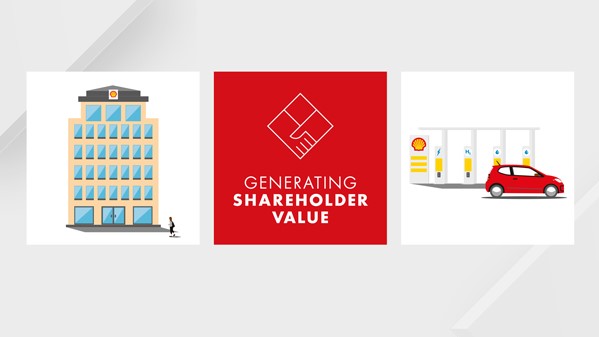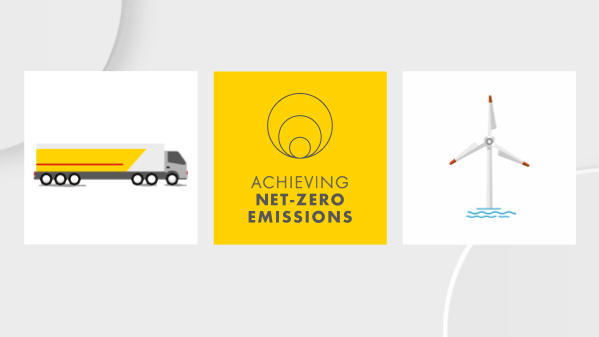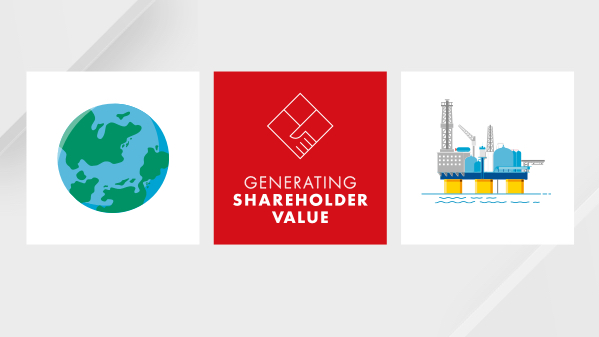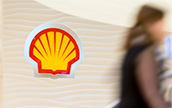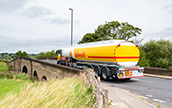Note 4 - Climate change and energy transition
In 2021, Shell launched its Powering Progress strategy to accelerate the transition of its business to net-zero emissions, including targets to reduce the carbon intensity of energy products sold (Scope 1, 2 and 3 emissions) by 6-8% by 2023, 20% by 2030, 45% by 2035, and 100% by 2050, in step with society. In October 2021, Shell announced a new target to halve the absolute emissions from its operations and the energy it buys to run them by 2030, compared with 2016 levels on a net basis. This additional target will help Shell to step up the pace of change to become a net-zero emissions energy business.
This note describes how Shell has considered climate-related impacts in some key areas of the financial statements and how this translates into the valuation of assets and measurement of liabilities as Shell makes progress in the energy transition.
Note 2 Significant accounting policies, judgements and estimates describes uncertainties, including those that have the potential to have a material effect on the Consolidated Balance Sheet in the next 12 months. This note describes the key areas of climate impacts that potentially have short- and longer-term effects on amounts recognised in the Consolidated Balance Sheet at December 31, 2021. Where relevant, this note contains references to other notes to the Consolidated Financial Statements and aims to provide an overarching summary.
Financial planning and assumptions
This section provides an overview of how key assumptions that underpin these financial statements interact with scenarios. Subsequently, the sensitivity of carrying amounts to commodity prices, if different assumptions were applied, is described.
There is no one single scenario that underpins the financial statements. Shell’s scenarios are designed to challenge management’s perspectives on the future business environment and stretch management to consider even events that may be only remotely possible. As a result, scenarios are not intended to be predictions of likely future events or outcomes and are not the basis for Shell’s financial statements and operating plans.
Shell scenarios (see “About this Report”) and the range of possible outcomes inform the development of Shell’s strategy and Shell’s view on future oil and gas price outlooks. These oil and gas price outlooks are one of the key assumptions that underpin Shell’s financial statements. Shell’s scenarios inform high-, mid- and low-price outlooks. The mid-price outlook represents management’s reasonable best estimate and is the basis for Shell’s financial statements, operating plans and impairment testing.
Shell’s targets to reduce absolute Scope 1 and 2 emissions by 50% by 2030, compared with 2016 levels on a net basis, and 20% reduction of net carbon intensity of Scope 3 emissions by 2030, have been included in Shell’s operating plan. The operating plan also includes expected cost for evolving carbon regulations based on a forecast of Shell’s equity share of emissions from operated and non-operated assets also taking into account the estimated impact of free allowances. Carbon cost estimates are forecasted on a country-by-country basis and range from around $25 to around $200 per tonne of GHG emissions in 2030.
The financial statements are based on reasonable and supportable assumptions that represent management’s current best estimate of the range of economic conditions that may exist in the foreseeable future. Shell will continue to update its operating plan, pricing outlooks and assumptions that it uses, to take account of changes in the economic environment and the pace of the energy transition.
Property, plant and equipment and joint ventures and associates
Price sensitivities using climate pricelines
As noted, in accordance with IFRS, Shell’s financial statements are based on reasonable and supportable assumptions that represent management’s current best estimate of the range of economic conditions that may exist in the foreseeable future. The mid-price outlook informed by Shell’s scenario planning represents management’s best estimate. Impairment sensitivities of -10% or +10% to the mid-price outlook, as an average percentage over the full period are provided in Note 9 Property, plant and equipment. They would result in around $12-15 billion impairment or of some $6-9 billion impairment reversal respectively in Integrated Gas and Upstream.
The energy transition is expected to bring volatility and there is large uncertainty as to how commodity prices will develop over the next decades. Some price lines see a structural lower price during the transition period, while other price lines see structural higher commodity prices as a result of changes in both supply and demand. As the risk of stranded assets is prevalent with downside price risk in energy transition scenarios, sensitivities have only been undertaken for such downside scenarios. If different price outlooks from external and often normative climate change scenarios were used, this would impact the recoverability of certain assets recognised in the Consolidated Balance Sheet as at December 31, 2021. These external scenarios are not representative of management’s mid-price reasonable best estimate.
Sensitivity of carrying amounts to prices described below is under the assumption that all other factors in the models used to calculate recoverability of carrying amounts remain unchanged. Changes to prices are applied because of the significant impact on Shell’s business. It should be noted that a significant decrease in long-term forecasted prices would probably lead to further changes, such as in portfolio choices and cost levels.
Priceline 1 – Average prices from four 1.5-2 degrees Celsius external climate change scenarios: in view of the broad range of price outlooks across the various scenarios, the average of four external price outlooks was taken:
- IHS Markit/ACCS 2021 – under this scenario oil prices (real terms 2021 (RT21)) gradually decrease towards $20 per barrel (/b) in 2039, recovering to $46/b in 2046 and decreasing again towards $40/b in 2050. Gas prices (RT21) gradually increase towards 2050 to some $3 per million British thermal units (/MMBtu) for Henry Hub and $6/MMBtu for Asia and Europe.
- Woodmac WM AET-2 degree – under this scenario oil prices (RT21) gradually decrease towards $10/b in 2050. Gas prices (RT21) gradually increase towards 2050 to some $4/MMBtu for Henry Hub. For Asia and Europe, gas prices (RT21) increase to some $8/MMBtu around 2040, gradually decreasing towards 2050 to $6/MMBtu for Asia and $5/MMBtu for Europe.
- IEA NZE50 – under this scenario oil prices (RT21) gradually decrease towards $25/b in 2050. Gas prices (RT21) are around $2/MMBtu for Henry Hub. For Asia and Europe gas prices (RT21) decrease to some $4/MMBtu around 2040, with further slight decreases towards 2050.
- IEA SDS – under this scenario oil prices (RT21) gradually increase towards $56/b in 2030, and gradually decrease to $50/b in 2050. Gas prices (RT21) are around $2/MMBtu for Henry Hub. For Asia gas prices (RT21) decrease to around $5/MMBtu in 2050. For Europe gas prices (RT21) are slightly above $4/MMBtu for the whole period.
This priceline provides an external view of the development of commodity prices under 1.5-2 degrees Celsius external climate change scenarios over the whole period under review.
Applying this priceline to Integrated Gas assets of $65 billion and Upstream assets of $89 billion as at December 31, 2021, shows recoverable amounts that are $13-16 billion and $14-17 billion lower, respectively, than the carrying amounts as at December 31, 2021.
Priceline 2 – Hybrid Shell Plan and IEA NZE50: this priceline applies Shell’s mid-price outlook for the next 10 years (see Note 9). Because of the greater uncertainty, the International Energy Agency (IEA) normative Net Zero Emissions scenario for the period after 10 years is applied. This weights less price-risk uncertainty to the first 10 years reflected in the operating plan period and applies more risk to the more uncertain subsequent periods.
Applying this priceline to Integrated Gas assets of $65 billion and Upstream assets of $89 billion as at December 31, 2021, shows recoverable amounts that are $10-12 billion and $5-6 billion lower, respectively, than the carrying amounts as at December 31, 2021.
Oil price assumptions
[B] All figures are presented on real-term 2021 basis unless noted differently.
The graph above shows the oil pricelines on a real-terms basis applied for the period until 2040 for Shell’s mid-price outlook in comparison with the IEA Net Zero Emissions by 2050 scenario (IEA NZE50), the IEA announced pledges (IEA APS) scenario, the NGFS GCAM NZE 2050 scenario and the average prices from four 1.5-2 degrees Celsius external climate change scenarios (Priceline 1, above). The development of future oil prices is uncertain and oil prices have been subject to significant volatility in the past. Future oil prices may be impacted by future changes in macroeconomic factors, available supply, demand, geopolitical and other factors. The pricelines as per the scenarios NGFS GCAM NZE 2050, IEA NZE50 and the average prices from four 1.5-2 degrees Celsius external climate change scenarios differ from Shell’s best estimate and view of the future oil price.
|
|
|
$ billion |
|---|---|---|---|
|
Carrying amount |
Sensitivity |
|
Integrated Gas |
65 |
3 |
5 |
Upstream |
89 |
3 |
4 |
Total |
154 |
6 |
9 |
|
|
|
$ billion |
|---|---|---|---|
|
Carrying amount |
Sensitivity |
|
Integrated Gas |
65 |
–8 |
–10 |
Upstream |
89 |
–4 |
–5 |
Total |
154 |
–12 |
–15 |
|
|
|
$ billion |
|---|---|---|---|
|
Carrying amount |
Sensitivity |
|
Integrated Gas |
65 |
–10 |
–12 |
Upstream |
89 |
–5 |
–6 |
Total |
154 |
–15 |
–18 |
|
|
|
$ billion |
|---|---|---|---|
|
Carrying amount |
Sensitivity |
|
Integrated Gas |
65 |
–13 |
–16 |
Upstream |
89 |
–14 |
–17 |
Total |
154 |
–27 |
–33 |
Carrying value of Oil Products and Chemicals assets
Refineries in the Oil Products segment (carrying amount as at December 31, 2021, $6 billion of which $5 billion related to refineries in the five energy and chemicals parks, excluding refineries classified as held for sale) may be impacted under a two-degrees-Celsius or less external climate scenario. In line with Shell’s strategy, Shell’s refining footprint is being transformed into five energy and chemicals parks that will provide feedstocks for the chemicals and lubricants business, as well as other low-carbon energy products, including biofuels and hydrogen. This transformation will involve investments in assets that are expected to be resilient in the energy transition, and hence may have stable or increasing carrying amounts.
Assets in the Chemicals segment and Marketing assets in the Oil Products segment are also resilient to the energy transition with products in chemicals, lubricants, biofuels, bitumen, electric vehicle charging and convenience retail having no or low Scope 3 emissions. The demand for these products is also expected to be increasing in many markets and as a result are not expected to be impacted by lower commodity price scenarios.
Portfolio changes
Since 2016, the carrying amount of production assets in Integrated Gas and Upstream decreased from $169 billion as at December 31, 2016, to $118 billion as at December 31, 2021. Over this period, depreciation was higher than additions for each year, and disposals of property, plant and equipment with a carrying amount of some $25 billion occurred. Since 2016, the carrying amount of joint ventures and associates decreased from $33 billion as at December 31, 2016, to $23 billion as at December 31, 2021. The carrying amount of capitalised exploration and evaluation expenses decreased from $19 billion as at December 31, 2016, to $7 billion at December 31, 2021. This is the result of final investment decisions and reclassifications to production assets and amounts charged to expenses exceeding additions (specifically significantly lower additions since 2020).
Carrying amount of exploration and evaluation assets
$ billion as at December 31
Carrying amount of production assets
$ billion as at December 31
Carrying amount of refineries
$ billion as at December 31
[B] Includes refineries held for sale ($1.5 billion).
Since 2016, Shell’s Oil Products portfolio has evolved, shifting from 15 refineries at the end of 2016 towards five energy and chemicals parks. During that period Shell assumed the sole ownership of two refineries through the dissolution of the Motiva joint venture, and disposed of, converted or closed nine refineries (two of which are held for sale as at December 31, 2021). The carrying amount of refineries decreased from $10 billion as at December 31, 2016, to $6 billion as at December 31, 2021, (excluding refineries classified as held for sale). It is anticipated that Shell will continue to invest in the transformation of its refining portfolio into five energy and chemicals parks which produce chemicals and low- or no-carbon products.
Long term, it is expected that the current Shell portfolio will change and evolve with the energy transition. Decision-making on the future portfolio is guided by the pace of society’s progress and the aim of being in step with society as it moves towards the goals of the Paris Agreement. Getting the energy system on a path to net-zero emissions will require unprecedented, coordinated action between energy providers, consumers and, crucially, governments. Shell has set out its strategy of how it will achieve its target to be a net-zero emissions energy business by 2050, in step with society.
Impact on remaining life of assets
The energy transition and the pace at which it progresses may impact the remaining life of assets. Integrated Gas and Upstream assets are generally depreciated using a unit-of-production methodology where depreciation depends on production of Securities and Exchange Commission (SEC) proved reserves (see Note 2). Based on production plans of existing assets, some 29%, 3% and 0% of SEC proved reserves as at December 31, 2021, would currently be left by 2030, 2040 and 2050, respectively. An analysis of Integrated Gas and Upstream production assets of $118 billion as at December 31, 2021, based on planned reserves depletion shows that these assets would be significantly further depreciated under the unit-of-production method by 2030 and fully depreciated by 2050, providing a further perspective on the risk of stranded assets carried in the Consolidated Balance Sheet as at December 31, 2021. For refineries in Oil Products, depreciation of assets is on a straight-line basis over the life of the assets over a period of 20 years (see Note 2). Over the course of the energy transition, the current carrying amount of refineries will be fully depreciated, offset by anticipated investments in assets that are expected to be resilient in the energy transition as described above.
Deferred tax assets
In general, it is expected that sufficient deferred tax liabilities and forecasted taxable profits within the planning period of 10 years are available for recovery of the deferred tax assets recognised at December 31, 2021. Integrated Gas and Upstream deferred tax assets recognised are expected to be recovered within the period of production of each asset. For deferred tax assets of $711 million as at December 31, 2021, mainly related to Brazil, Malaysia and Australia, this period extends beyond 10 years. Deferred tax assets in Oil Products to be recovered in more than 10 years are limited to $854 million as at December 31, 2021, and mainly relate to retail operations in Germany and France. In the light of the potential impact of the accelerated energy transition in Oil Products, cash flows in Oil Products beyond 10 years (for a maximum of an additional 10 years) were further risked to determine recoverability of deferred tax assets beyond 10 years (see Note 17).
Decommissioning and other provisions
The energy transition may result in decommissioning and restoration occurring earlier than expected. The risk on the timing of decommissioning and restoration activities for Integrated Gas and Upstream fields is limited, supported by production plans in the foreseeable future (see “Impact on remaining life of assets” above). Acceleration of decommissioning and restoration activities has also been reflected in the assessment of the appropriate discount rate. In 2021, the discount rate has been revised from a 30-year to a 20-year term in line with the average remaining life of Integrated Gas and Upstream assets.
Also, the current discount rate applied for calculating provisions (see Note 19) is equal to the inflation rate applied in estimation of provisions. As a result, a potential acceleration of decommissioning and restoration activities would have no time value of money impact for the decommissioning and restoration provision.
In Oil Products, it was industry practice not to recognise decommissioning and restoration provisions associated with manufacturing facilities in Oil Products and Chemicals. This was on the basis that these assets were considered to have indefinite lives, so it was considered remote that an outflow of economic benefits would be required. In 2020, Shell considered the changed macroeconomic fundamentals, together with Shell’s plans to rationalise the Group’s manufacturing portfolio. Shell also reconsidered whether it remained appropriate not to recognise decommissioning and restoration provisions for manufacturing facilities. In 2020, provisions of $899 million were recognised for certain shorter-lived manufacturing facilities (see Notes 19 and 26). The remaining five energy and chemicals parks are considered longer-lived facilities that are expected to be resilient in the energy transition, and decommissioning would generally be more than 50 years away.
Onerous contracts
Closure or early termination of activities may lead to supply contracts becoming onerous. Onerous contract provisions (see Note 19) have been recognised as at December 31, 2021, to reflect changes in expected future utilisation of certain assets. These include contracts in relation to unused terminals and refineries.
Dividend resilience
External stakeholders have requested disclosures on how climate change affects dividend-paying capacity. If a further impairment had been recognised in 2021 using any of the climate change scenarios described above, this would not have impacted the ability to pay dividends in this financial year because of the strong cash flow generation and financial reserves.
A forward-looking statement regarding future dividend-paying capacity cannot be provided because of unknown risks and uncertainties that could cause actual results, performance or events to differ materially from those expressed or implied in these statements.
Physical risks
Mitigation of physical risks, whether or not related to climate change, are considered and embedded in the design and construction of assets and the associated costs are included in the initial recognition of assets in the Consolidated Balance Sheet. Over the past few years Shell has conducted studies aimed at expanding the understanding of physical risks. Shell continues to develop its understanding of all relevant aspects of climate resilience. Analyses have been performed addressing a range of typical climate change features for a select group of assets and it was concluded that currently any adaptation costs for those selected assets is not expected to be significant. Shell recognises the need to deepen and widen these analyses for a more comprehensive climate resilience assessment. Shell continues to monitor this and plans to conduct further analysis on other assets as well as assess long-term physical impacts.
Acute risks, such as flooding and droughts, wildfires and more severe tropical storms, could potentially impact Shell’s operations and supply chains. The frequency of these hazards and impacts is expected to increase in certain high-risk locations. The physical risks are assessed at an asset level. Metocean (meteorology and oceanography) engineering experts assess and monitor the physical risks and logistic activities for certain of Shell’s assets. These studies aim to ensure Shell’s operations are safe and that Shell’s facilities can be accessed safely under extreme conditions.
Extreme weather events could have a negative impact on earnings. Recent examples in 2021 include the Texas winter storm and Hurricane Ida. These had an impact on Shell’s operations and an adverse impact on 2021 earnings of around $200 million and $400 million respectively.

